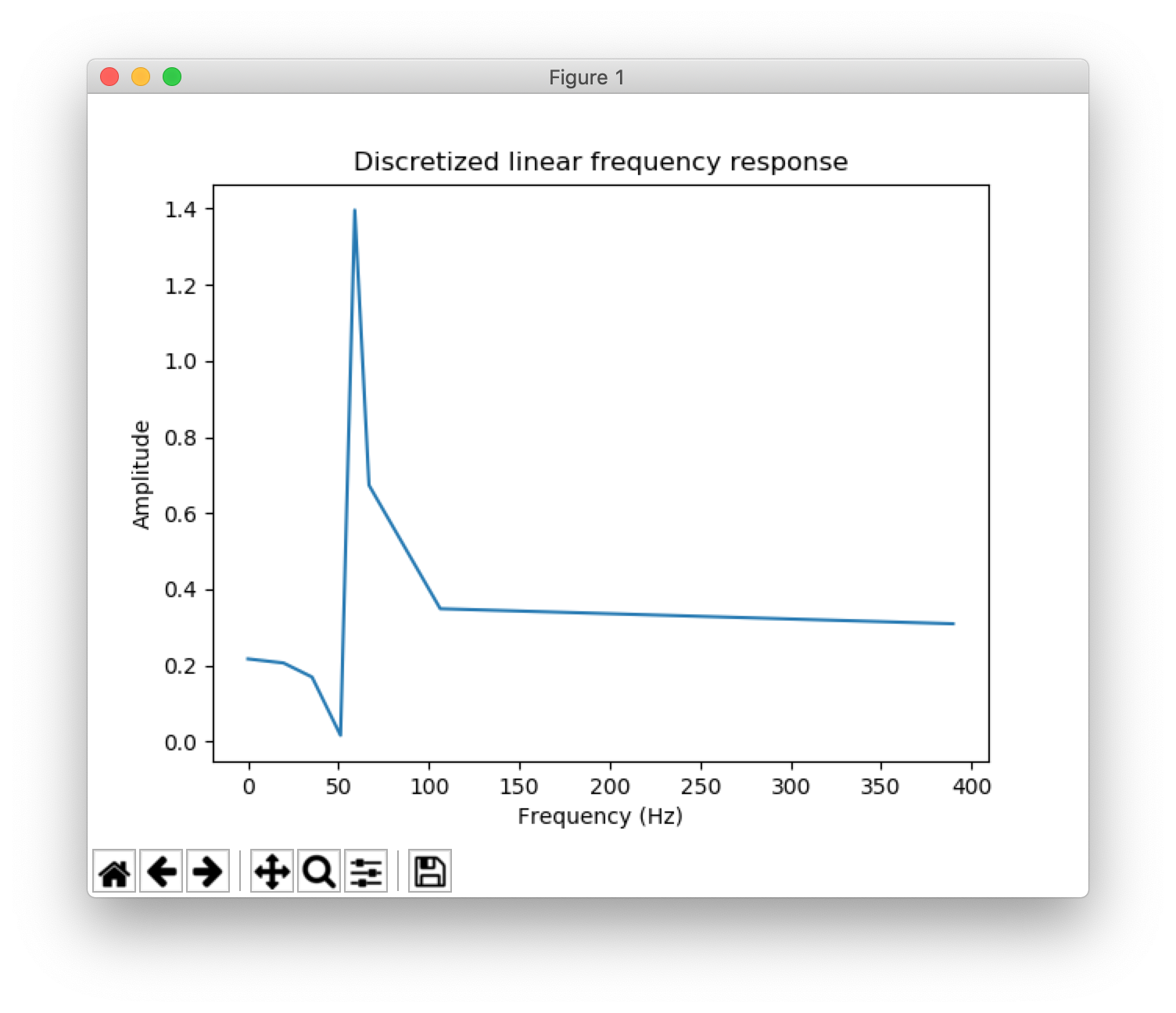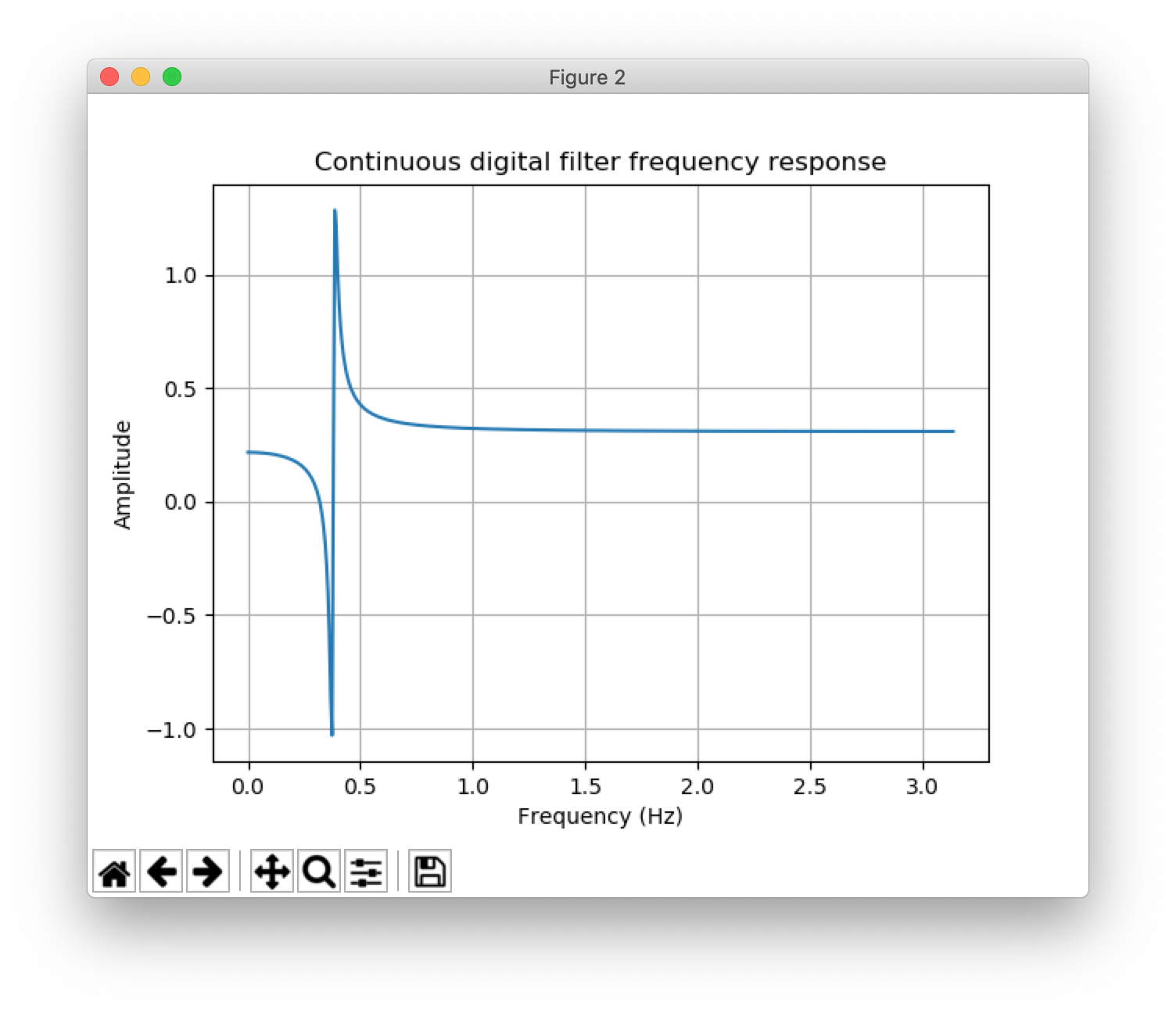FDLS Filter Design Algorithm
The FDLS (frequency-domain least squares) algorithm converts discrete arrays of desired frequency, amplitude, phase, and delay samples, to the optimal numerator and denominator coefficients of a IIR transfer function or difference function.
Details
To do this, it computes the desired output values in Y, and the transfer function / difference function inputs in X. These are the sequences of inputs and outputs (u and y) for N and D time samples back in time. Then it computes the pseudoinverse of this linear system of equations to find theta, the coefficients of b and a.
References
This algorithm was designed by Greg Berchin in his master's thesis "A New Algorithm for System Identification from Frequency Response Information," published in 1988 by U.C. Davis. The algorithm is described in a digestible manner in Chapter 8 of his book "Precise Filter Design."
Here is a PDF of Chapter 8 which describes this exact algorithm. The sample data for the algorithm is taken from this chapter.
Setup
Run either:
conda create -n fdls --file requirements.txt
conda activate fdlsor
conda env create -f environment.yml
conda activate fdlsExample w/ data
python example.pyThis will run our example using the sample data from the chapter, and should generate graphs like this:
Just read example.py, it should be very simple to understand the implementation.
Another (super basic) example usage
import fdls
import data
import scipy
b, a = fdls.fdls(data.frequency, data.amplitude, data.phase, sample_delay=data.delay, n=2, d=2, fs=1000)
w, h = scipy.signal.freqz(b, a)Plot w (frequencies) against h (amplitudes) to see the
continuous version of the discrete filter based on
the frequency samples provided via the coefficients a and b.
a and b are taps that you can export to any filter chip
or block in GNURadio.

